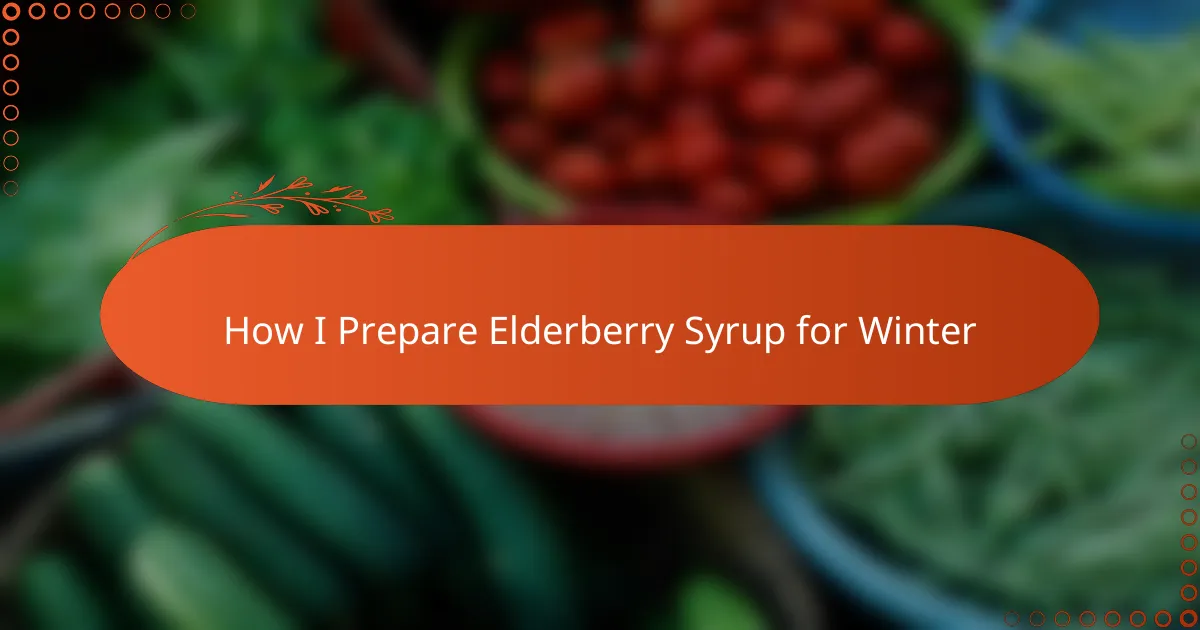Key takeaways
- Wild berry jams capture unique flavors and are a personal connection to nature, with each batch varying due to berry unpredictability.
- Choosing ripe berries with good natural pectin content enhances the jam’s flavor and thickness, while thorough cleaning and drying prevent texture issues.
- Essential tools include a heavy-bottomed pot, a long-handled wooden spoon, and airtight glass jars to ensure successful jam-making and preservation.
- Proper storage in cool, dark places and using water bath canning helps maintain the jam’s freshness and flavor for longer periods.

Understanding Wild Berry Jams
Wild berry jams are a true reflection of nature’s bounty, capturing the vibrant flavors and unique characteristics of each berry. I’ve always found that these jams carry a sense of place and season, making every jar feel like a little treasure from the wild.
Have you ever noticed how wild berries can taste more intense and complex than store-bought varieties? That depth of flavor makes the jam-making process feel almost like preserving a moment in time—each spoonful reminds me of long walks through the forest and the excitement of finding those perfect berries.
What really sets wild berry jams apart is their unpredictability. No two batches are exactly the same, and I love embracing this natural variation. It teaches me patience and appreciation for the small surprises that come with every harvest, turning a simple kitchen task into a personal connection with nature.
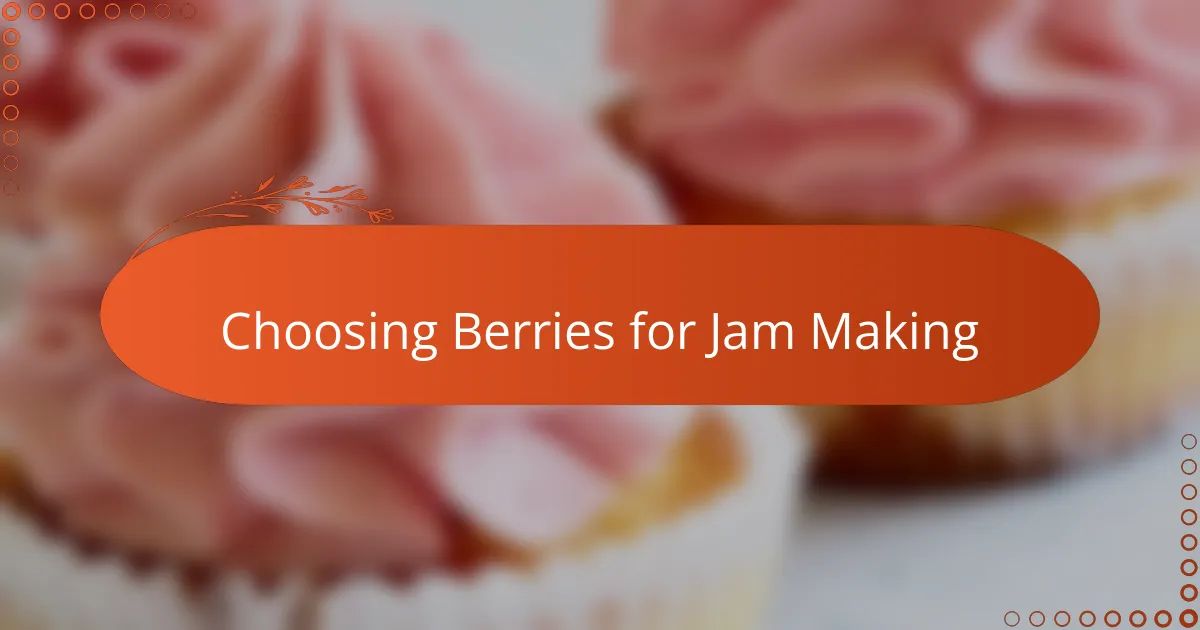
Choosing Berries for Jam Making
Choosing the right berries for jam is more than just picking what looks ripe—it’s about tuning into the subtle differences in flavor and texture. I remember the first time I tried making jam with a mix of tart blackberries and sweet raspberries; the balance was magical, and it made me realize how much variety wild berries can bring.
Do you ever wonder why some berries seem to make your jam set perfectly, while others don’t? From my experience, berries with a good natural pectin content, like wild currants or elderberries, often help the jam thicken nicely without extra additives. It’s a little bit of berry science that can save you time in the kitchen.
Also, I’ve found that choosing berries at their peak ripeness is key—but not overripe. Picking them when they’re just ripe ensures the jam is bursting with flavor but not overly soft or watery. That sweet spot is what turns a simple batch of jam into something truly unforgettable.
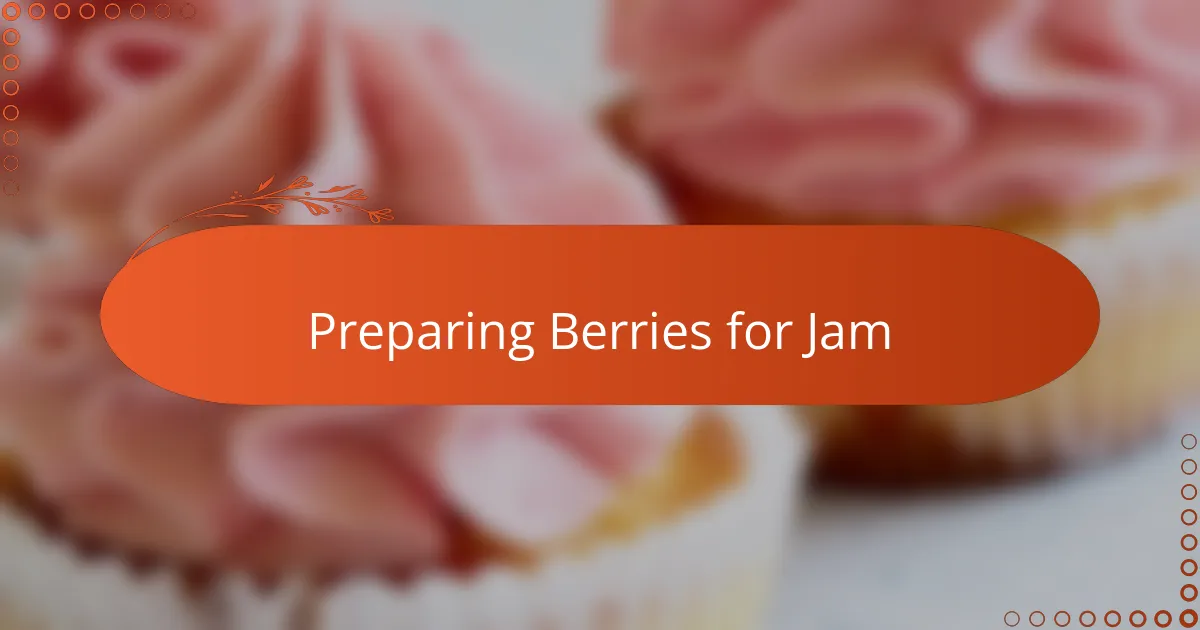
Preparing Berries for Jam
Cleaning wild berries before turning them into jam is a step I never rush. Have you ever tasted jam with a hint of dirt or tiny leaves? It’s a small thing, but it can change the whole experience. Gently rinsing the berries in cool water, while carefully removing stems and any debris, feels like giving each berry a fresh start.
Sorting through the berries is another part of the process that I’ve come to really appreciate. I find myself pausing to pick out any bruised or overly soft ones—because these can make the jam cloudy or affect its texture. It’s a slow, mindful moment where I connect with the fruit, almost like preparing guests for a perfect party.
One trick I learned over the years is to let the cleaned berries drain thoroughly or even pat them dry with a kitchen towel before cooking. Moisture can dilute the jam, and I think preserving the full intensity of those wild flavors depends on this little bit of extra care. Have you ever had a batch that was too runny? This is usually where it went wrong.
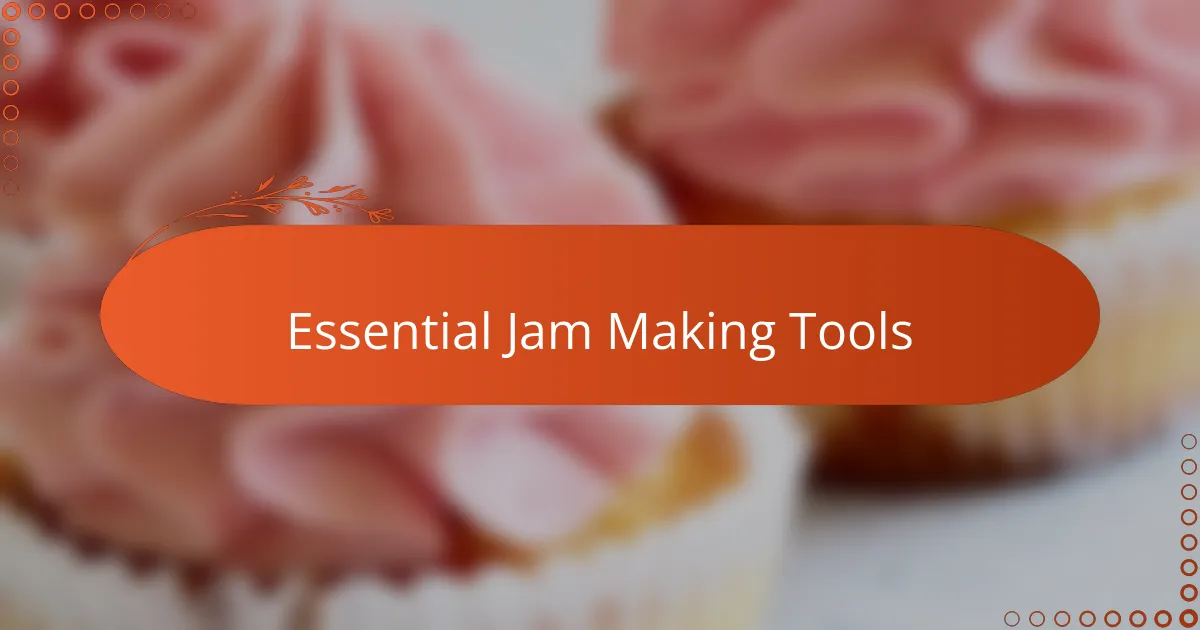
Essential Jam Making Tools
Having the right tools at hand can really make the jam-making process smooth and enjoyable. For me, a sturdy, heavy-bottomed pot is essential—it ensures even heating and helps prevent the jam from scorching, which has saved many batches from disaster. Have you ever tried stirring jam in a thin pan and ended up with a burnt aroma? It’s not a great experience.
I always reach for a long-handled wooden spoon when stirring my wild berry jams. This simple tool feels familiar and comfortable in my hand while allowing me to keep the pot under control. Plus, wooden spoons don’t conduct heat like metal ones, so I don’t burn my fingers while stirring a boiling pot of bubbling goodness.
When it comes to measuring and storing, I find glass jars with airtight lids to be non-negotiable. Their transparency lets me admire the vibrant colors of the jam, and knowing the lids seal tightly gives me confidence that each batch will stay fresh for months. Have you noticed how satisfying it is to line up those jars on the shelf, each one a little jar of homemade magic?
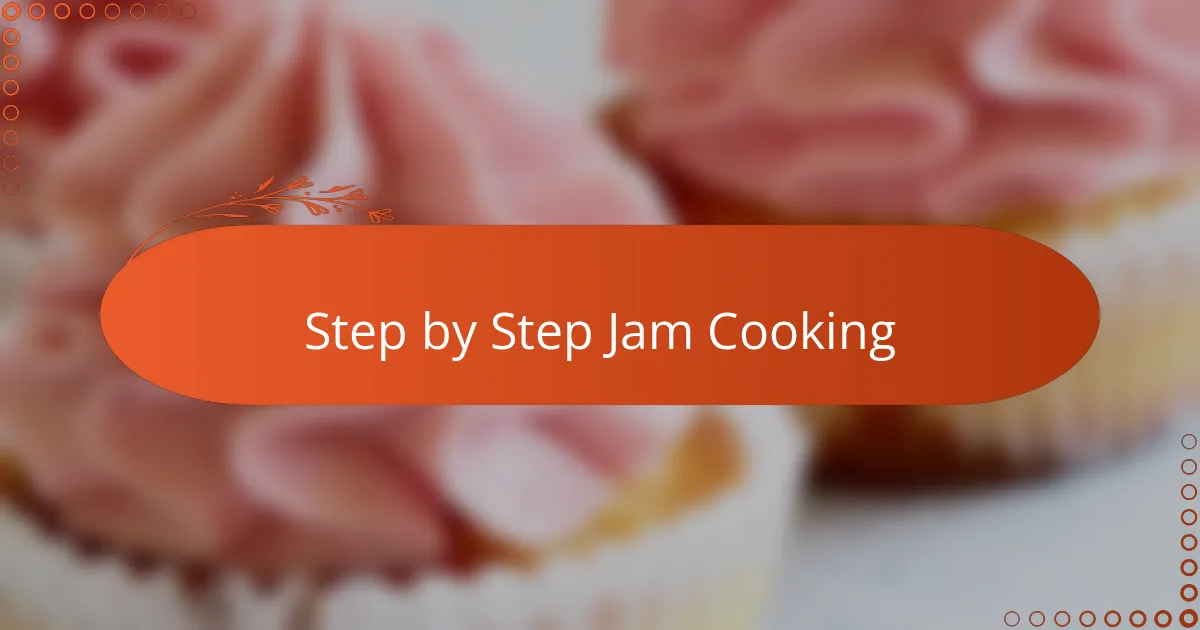
Step by Step Jam Cooking
Once the berries are ready, I start by gently crushing them to release their natural juices, but I always leave some chunks for that delightful texture I love in wild berry jam. Have you ever noticed how the smell changes as the fruit begins to soften? It’s like the kitchen fills with a burst of summer memories.
Cooking the berries slowly with sugar and a splash of lemon juice is where patience really pays off. I keep the heat moderate and stir consistently because rushing this step often leads to jam that doesn’t set properly – I’ve learned this the hard way, more than once. That gradual simmer lets the flavors meld beautifully, turning the mixture thick and luscious.
When I see the bubbles thicken and the jam coats the back of my spoon, I know it’s time to test the set. I usually do the cold plate test—putting a spoonful of jam on a chilled dish and tipping it to see if it wrinkles—a little trick that never fails. Have you tried this? It’s a reassuring moment that signals the transition from cooking to preserving nature’s sweetness for months to come.
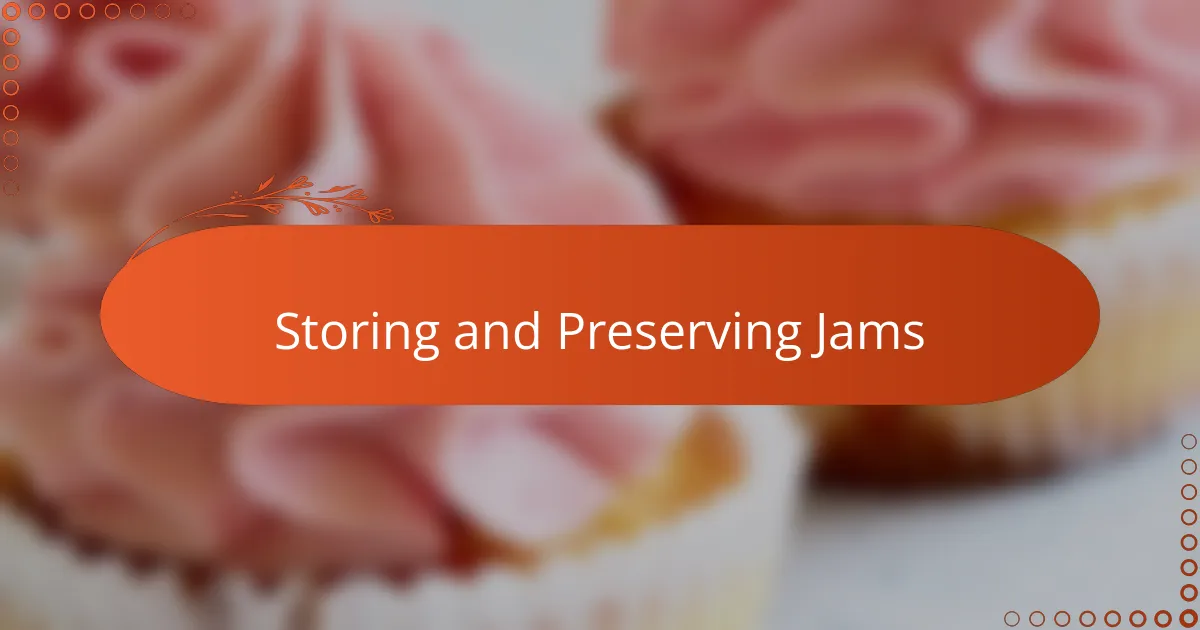
Storing and Preserving Jams
Storing wild berry jams properly has always felt like preserving a little piece of summer magic for me. I’ve learned that once the jars are sealed and cooled, keeping them in a cool, dark place—like a pantry or cellar—helps maintain their vibrant color and fresh flavor far longer than just leaving them on the kitchen counter. Have you ever opened a jar months later and been surprised by how the taste transports you back to the wild berry picking season? That’s the power of good storage.
When it comes to preserving jams beyond just refrigeration, I’m a big fan of the water bath canning method. This step not only seals the jars tightly but also creates a vacuum that keeps everything safe from spoilage. I remember the first time I successfully canned a batch of wild raspberry jam; the satisfying pop of the lid was like a little victory sound that guaranteed my labor would last through winter’s gray days.
Of course, once opened, jams are a race against time and air exposure, so I keep them refrigerated and try to use them up within a few weeks. I often wonder if you’ve noticed how even the best-preserved jam starts to lose its zing after a while? That’s why I always label my jars with dates—the moment I open one, I make a mental note to enjoy it quickly before those wild berry flavors begin to fade.

